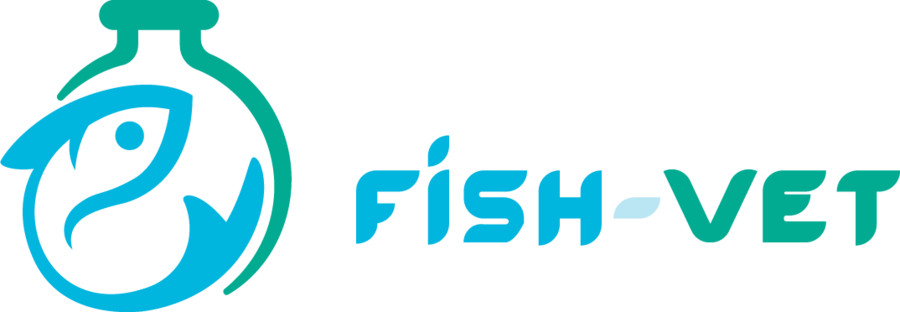
News
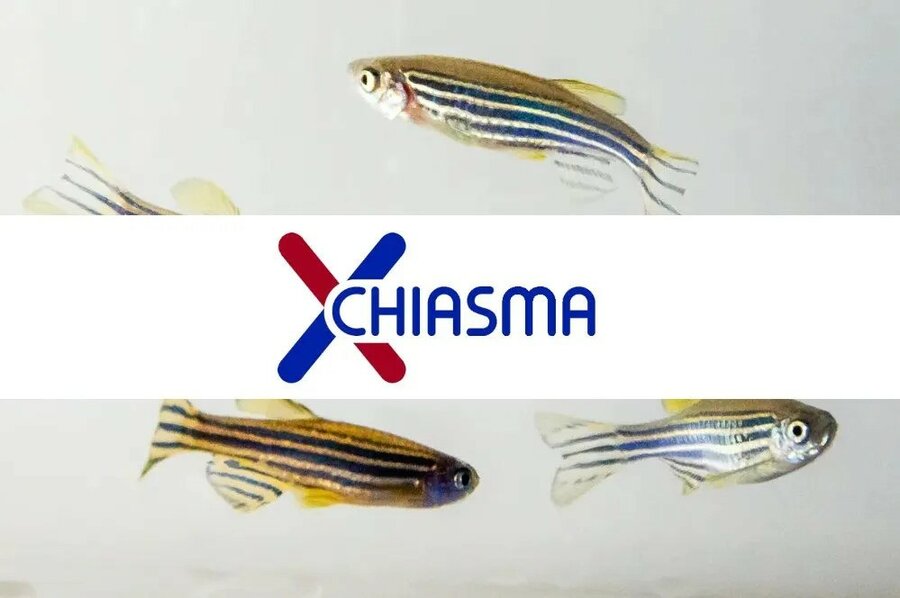
New EU project CHIASMA at FISH-VET
Led by Ass. Prof. Mette Muller and Em. Prof. Erik Ropstad, people from the Department of Production Animal Clinical Sciences at the veterinary school are now involved in a new EU project named CHIASMA.
CHIASMA is a 10 million euros EU (HORIZON-RIA) project with 20 European partners. CHIASMA aims to develop and demonstrate a comprehensive set of new approach methodologies (NAMs), and integrate them into a user-friendly, reliable, and robust framework to perform human and environmental safety evaluation of various chemicals.
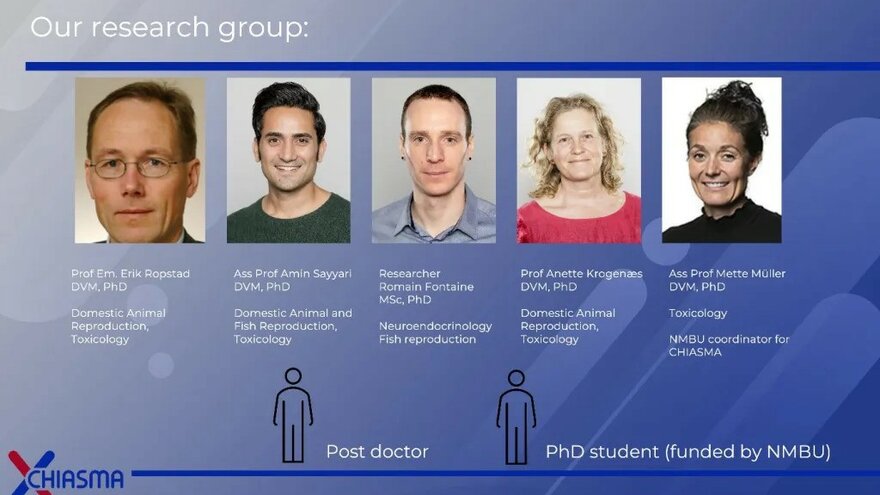
In this project, PRODMED will develop new approaches, adapting recently developed ex vivo and in vitro models, to investigate the effects of chemicals, including endocrine disruptors, on the reproductive function using small model fish as a model for human health. To do this, CHIASMA will mostly take place in the small model fish facility (FISH-VET), as well as the andrology and physiology laboratories at the veterinary school.
A PhD position for 3 years financed by NMBU has just been associated to the Chiasma project. We are looking for candidates!
More info on the project on their website: www.CHIASMA-Project.eu

New project on vaccination of Atlantic salmon against salmon gill poxvirus surface proteins
Salmon gill poxvirus (SGPV) infection is a common denominator in many cases of complex gill disease in the Norwegian salmon farming industry and may, as a single agent infection, result in salmon poxvirus disease (SGPVD). As our knowledge of the salmon defense mechanisms against SGPV is yet in its primitive phase, the ‘Immunopox’ project, led by Mona Gjessing at the Norwegian Veterinary Institute (NVI), will contribute to understanding the salmon humoral immune response to the virus infection by establishing a bio-plex assay to measure specific antibodies against SGPV in wild and farmed salmon blood and skin/gill mucus.

In that regard, a trial of fish vaccination using three of the virus surface proteins that have been studied in the vaccination of mammals against different poxvirus infections and which were produced in vitro at NVI will be performed at FISH-VET at NMBU. The trial aims to collect serum, mucus, and tissue samples to study the reaction of the fish to the virus proteins. The recombinant proteins will be formulated into vaccines using MONTANIDE ISA 763 A adjuvant and will be injected intraperitoneally in fish.
Based on the results of the trial in March 2024, the recombinant protein that will be immunogenic will be also employed in a larger vaccination trial that aims to challenge the vaccinated fish to examine the protective effect of the vaccine formulation against SGPV infection. This trial was approved by Mattelsyint (FOTS ID: 30361) and will be running between January 18th and March 20th under the responsibility of Haitham Tartor who is the one who produced the proteins and who is also a work package leader in the Immunopox project.
New project on Infectious Salmon Anemia virus (ISAV) by the Norwegian Veterinary Institute
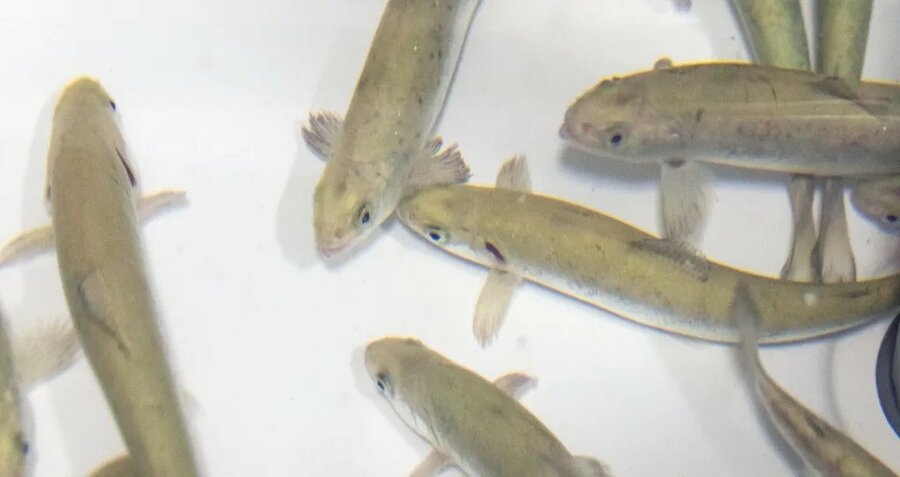
In a quest to unravel the mysteries behind the ever-changing virulence of the Infectious Salmon Anemia virus (ISAV), researchers at the section for Aquaculture biosecurity at Norwegian Veterinary Institute Ås, embarked on an exciting initiative to dive deep into the intricate world of ISAV, by exploring the nuances in virulence, disease development, and outcomes between historical and newer isolates.
The team, led by Simon Weli and Sonal Patel, carried out infection trial in Atlantic salmon, using 11 carefully selected ISAV field isolates, which were obtained from different outbreaks spanning the timeline from 2013 to 2022. The challenge trial, which took seven week (from October 23 – December 4), was performed at the new state of the art salmon facility (FISH- VET) at NMBU Ås.
The transmission study in Atlantic salmon, will unveil potential differences in virulence, and the very essence of fish pathology. It will help to pinpoint ISAV virulence markers that hold the key to ISAV’s behavior and spread in the farms.
New project DeviHeart to study the consequences of deviating heart morphology in farmed salmon

Our facility is currently facilitating the DeviHeart project (Consequences of Deviating Heart morphology in farmed salmon) led by Michael Frisk at the Institute for Experimental Medical Research (IEMR) at Oslo University Hospital (OUS). DeviHeart is a four-year project funded by the Norwegian Seafood Research Fund (FHF). It involves collaboration with NMBU (Norwegian University of Life Sciences) and several aquaculture companies, including Emilsen Fisk AS, Bjørøya AS, and Flatanger Settefisk AS.
The primary goal of the DeviHeart project is to investigate the short- and long-term consequences of deviating cardiac remodeling in farmed salmon (Salmo salar). Specifically, the project aims to determine the critical developmental phases for optimal heart growth in salmon. The team will employ various methods to monitor cardiac health, including echocardiography, light microscopy, optical mapping (OM) recordings of calcium transients in whole hearts, and the analysis of production data from aquaculture farms.
The project is based on the observation of a high prevalence of cardiac morphological deviations in Atlantic salmon aquaculture facilities. Although the exact consequences of these deviations are not fully understood, preliminary and published data suggest that they may negatively impact fish welfare and health. Additionally, an increased prevalence of cardiac remodeling is associated with a higher occurrence of fatal cardiac diseases such as cardiomyopathy syndrome, pancreas disease, and heart and skeletal muscle inflammation.
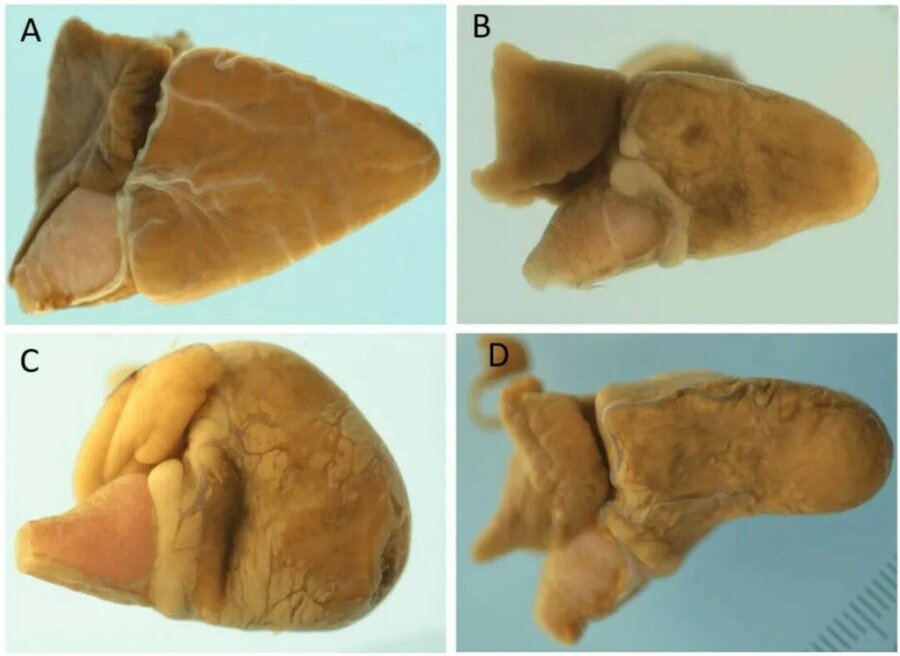
Diviating heart morphology in salmon (A – wild, B-D – farmed). Picture taken from article “ Hvordan står det til med laksens hjertehelse?” at kyst.no.
To investigate the temperature effects during the egg incubation and freshwater phases, the project will be conducted in both commercial and experimental settings. The team aims to identify the critical phases for healthy heart development in salmon. By closely monitoring cardiac health throughout all development phases, the researchers hope to gain insights into the long-term consequences of altered heart development on fish welfare, health, and performance.
Michael Frisk together with Ida Beitnes Johansen and Marit Stormoen (NMBU) will address the urgent need to understand and mitigate the issues related to cardiac morphological deviations in farmed salmon, with the aim of maintaining a successful and sustainable aquaculture industry while ensuring the welfare of the fish.
Full description of the project can be found in FHF project base.
New project, SALMOCODE: the Salmon Map of Organs and Cells for Optimal Development of Embryos
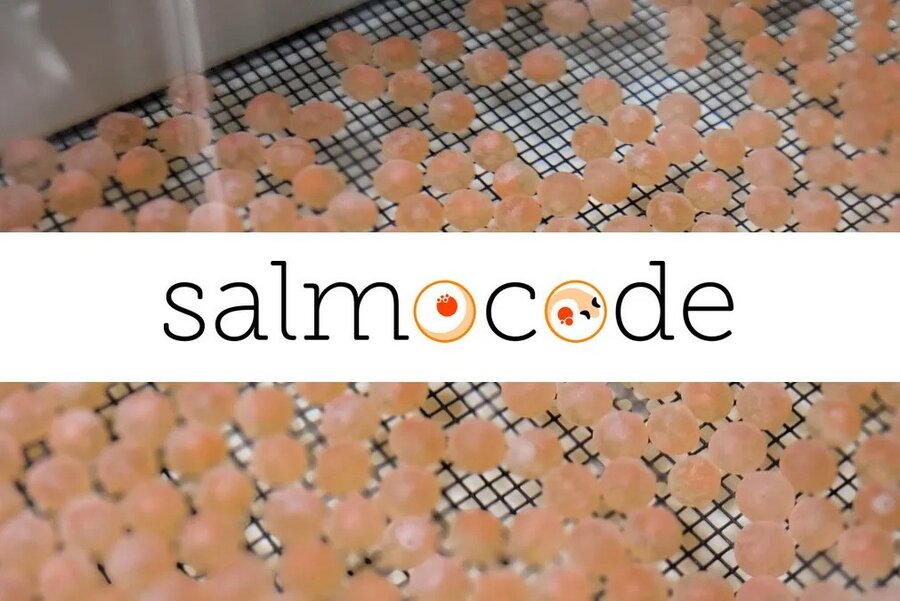
Led by Christiaan Henkel at BIOVIT (NMBU), SALMOCODE (the Salmon Map of Organs and Cells for Optimal Development of Embryos) is a three-year collaboration between NMBU, Nofima, UiT, Aqua Kompetanse, and NCE Aquaculture, with industrial partners Benchmark Genetics and MOWI, funded by the Norwegian Seafood Research Fund (FHF). SALMOCODE will use single-cell transcriptomics to investigate the vulnerability of developing Atlantic salmon to environmental conditions.
The Norwegian aquaculture industry produces over 1.6 million tonnes of salmon a year, more than half of the global production. This production level demands fast-growing fish, which has been achieved both by targeting growth rate in selective breeding and by applying high rearing temperatures during early life stages. However, more than 90 million salmon a year are lost before they reach slaughter size, compromising economic, ethical, and environmental sustainability. Losses occur for a variety of reasons, but for a large part can be attributed to deficiencies in organ health, including heart, kidneys, and gills, but also the immune system, skin, and skeleton.

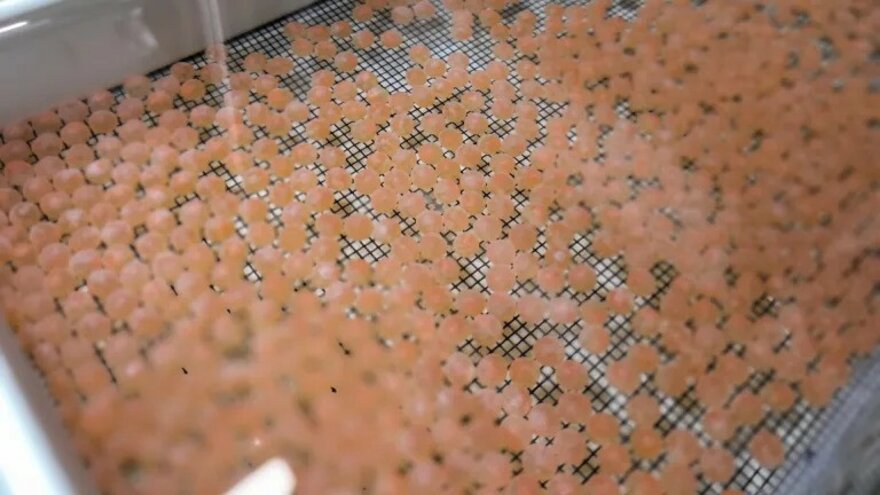
As they develop in eggs exposed to the environment, fishes are especially susceptible to external influences during early development. These include temperature and light, which have been shown to have long-term fitness effects. The new project SALMOCODE will explore the hypothesis that production conditions during embryonic development of Atlantic salmon can have a negative impact on organogenesis, the initial phase of organ development, roughly between gastrulation and hatching. This complex process consists of pluripotent stem cells undergoing successive rounds of differentiation, eventually giving rise to numerous specialized cell types, which combine to form functional organs.
Over the past decade, single-cell transcriptomics (scRNA-seq) has emerged as the leading technology for addressing questions on tissue composition and heterogeneity, developmental biology, and regulation of gene expression. It allows quantification of gene expression for thousands to millions of individual cells, in contrast to regular ‘bulk’ RNA-seq which mixes up the gene expression signals from all cells in a sample. scRNA-seq is still relatively expensive, but increasingly being applied in aquaculture research.
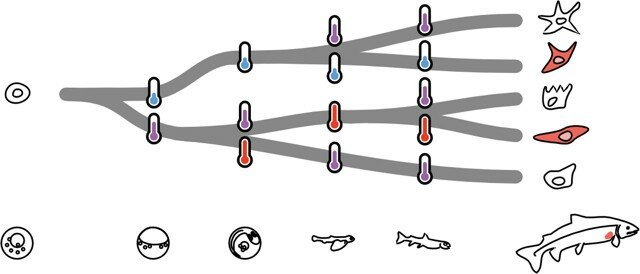
SALMOCODE plan to leverage scRNA-seq to screen developing salmon from a large number of production conditions. First, SALMOCODE will document the entirety of cellular and gene expression changes in the developing salmon embryo. This will yield a comprehensive ‘roadmap’ of organogenesis, detailing the temporal emergence of all cell types, their expression profiles, and cell fate decisions. SALMOCODE will subsequently generate ‘shallow’ (lower-cost) maps for development under diverse production conditions, and by comparing these to the reference precisely identify the first developmental timepoints at which specific organ abnormalities appear. Finally, SALMOCODE will use this knowledge to design protocols that circumvent their emergence and validate these using an array of stress tests.
A project description of SALMOCODE is available in Norwegian on the FHF project base: https://www.fhf.no/prosjekter/prosjektbasen/901864/
The Norwegian Animal Protection Alliance (Dyrevernalliansen) is funding a new project at our facility
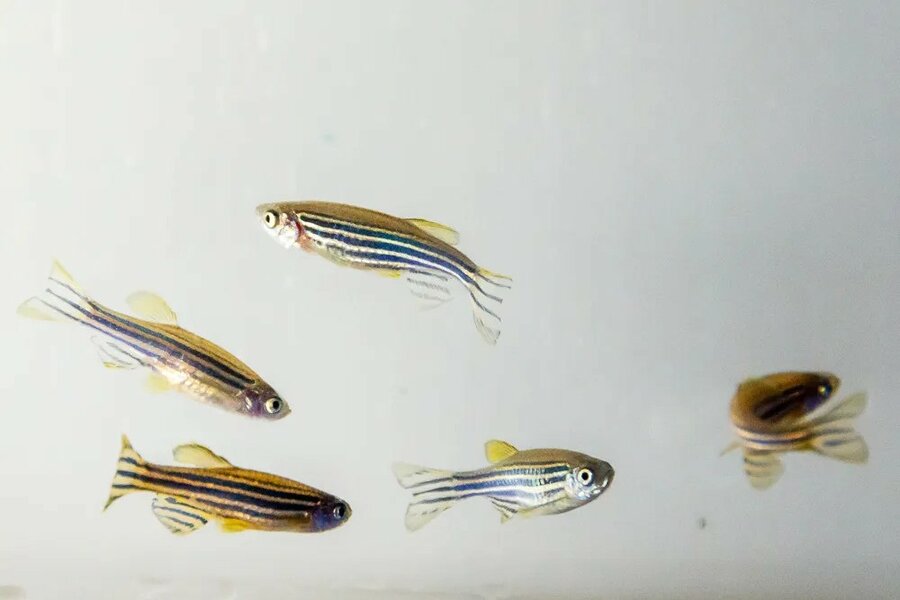
Dr. Romain Fontaine and Dr. Arturas Kavaliauskis, both affiliated with FISH-VET, have secured funding from The Norwegian Animal Protection Alliance (Dyrevernalliansen). The primary objective of their research project is to delve into the intricate role of various environmental factors in order to pinpoint those conducive to producing animals with enhanced health and welfare.
In the realm of both research and aquaculture, where the use of fish is on a steady rise, there exists a pressing demand to revolutionize existing procedures. The goal is clear: to elevate the health and well-being, or welfare, of captive fish. That is what Dyrevernalliansen is trying to achieve through their research fund call. Given the invaluable contributions of fish to both research and aquaculture, a moral imperative emerges—a duty to enact changes that prioritize their welfare. Yet, bridging this gap proves challenging. Established production procedures, like environmental enrichment, known for enhancing fish welfare, face resistance. Hatchery managers find them expensive and unpopular. The dilemma lies in the fact that, while society benefits significantly from fish in these domains, the path to better welfare is hindered by economic and logistical concerns.
To truly enhance fish welfare in aquaculture and scientific research, a paradigm shift is essential. We must pioneer cost-effective production strategies that seamlessly integrate with existing practices without compromising crucial production traits, like growth and reproduction, especially in model fish. This need is particularly pronounced in commercial aquaculture, including the intricate landscape of salmon farming.
In this pursuit, the challenge is clear—any implementation favoring fish health and welfare but adversely affecting productivity would face staunch resistance from the industry. The economic model underpinning their operations could be at stake. Hence, the crux of the matter lies in discovering innovative hatchery procedures that not only benefit fish health and welfare but, crucially, do so without casting a shadow on growth. The call is for solutions that not only maintain the delicate balance but, ideally, amplify positive impacts on fish growth—a transformative approach that aligns ecological consciousness with economic sustainability.
Our innovative project thus extends its focus beyond salmon, also encompassing small model fish, such as zebrafish and medaka. The overarching goal is to furnish valuable insights for refining maintenance protocols in production units, ultimately contributing to the advancement of fish health and welfare standards, both in fish farms and in research fish laboratories.
It is noteworthy that this research distinguishes itself by adopting a compassionate approach which matches Dyrevernalliansen funding requirements. No fish will be sacrificed during the course of the project, as only non-invasive methods will be employed to assess the health and welfare of the aquatic subjects. This commitment to ethical practices underscores the dedication of Dr. Fontaine and Dr. Kavaliauskis to advancing scientific knowledge while prioritizing the well-being of the animals involved.
Foods of Norway trials show promise for better salmon health
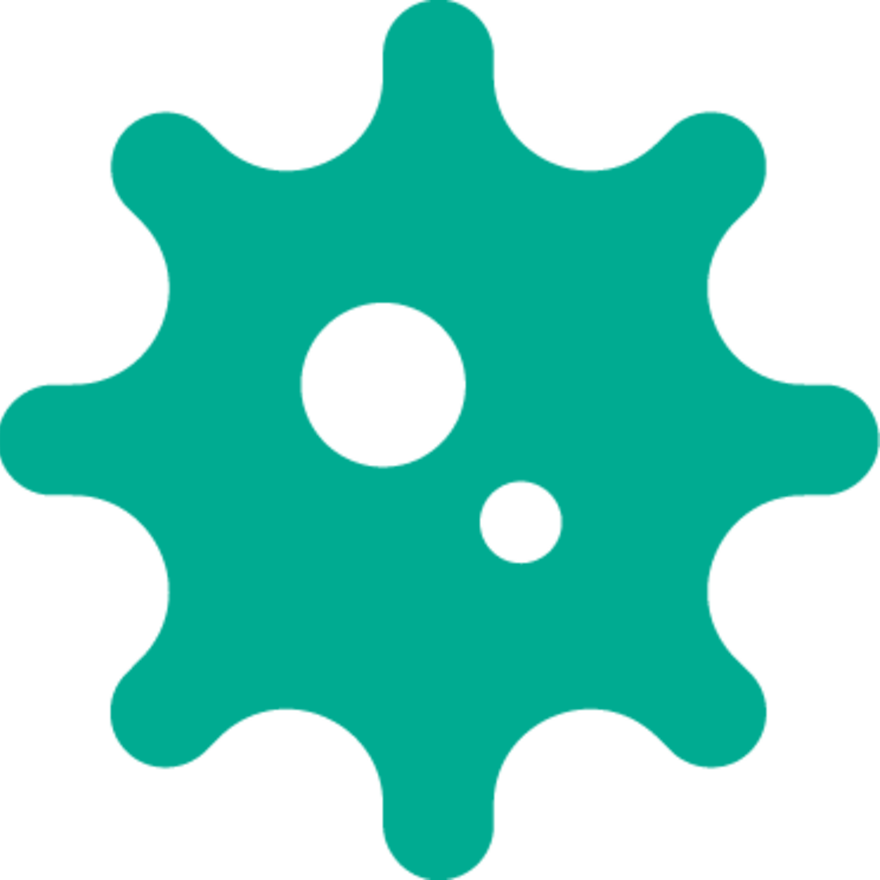
Foods of Norway has been conducting two pathogen challenge trials with Atlantic salmon at our state-of-the-art salmon fish facility. This trial marks a significant stride in testing innovative diets designed to fortify salmon against the formidable Yersinia ruckeri pathogen.
Salmon face a multitude of challenges, from vaccinations and changes in salinity to shifts in water quality and the rigors of handling. These stressors, though unavoidable, render the fish more susceptible to infectious outbreaks in both freshwater and seawater.
Yersinia ruckeri, the culprit behind enteric red mouth disease, causes havoc among various fish families crucial to aquaculture—think Salmonidae, including Atlantic salmon and rainbow trout. The economic toll of these infections is substantial, especially with the emergence of new Y. ruckeri strains, particularly the biotype II. Despite the development of a groundbreaking vaccine tailored to this biotype, its efficacy has waned, and antimicrobial resistance has loomed. The need for innovative vaccines and non-pharmacological interventions to bolster fish health has never been more pressing.
The immuno-nutrition strategy of Foods of Norway can be a game-changer in the quest to fortify fish against disease. This revolutionary approach involves tweaking the host’s immune responses through carefully curated ingredients and additives in their diet, enhancing disease resistance and overall well-being.
Among the ingredients in this immuno-nutritional strategy are β-glucans sourced from diverse fungi and seaweed. These compounds wield impressive immune-modulatory powers, acting as a shield for for fish. Additionally, microbial marvels such as the filamentous fungi Paecilomyces variotii (branded as PEKILO®) enter the spotlight. Packed with β-glucans and nucleotides, these fungal wonders not only boast a high protein content but also harbor bioactive components, making them promising contenders for the next generation of aquafeeds.
In the ever-evolving landscape of aquaculture, it’s clear that the path to optimal fish health lies in the fusion of cutting-edge science and nature’s own wonders. As we navigate the challenges posed by infectious outbreaks, the quest for effective solutions is ongoing, and the future of Atlantic salmon production will benefit from greater resilience and vitality.
New medaka line introduced in the lab
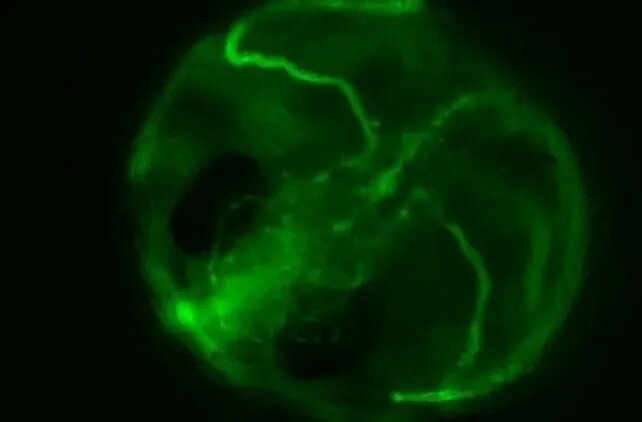
We just received a new transgenic line from the National BioRessource Project Medaka (NBRP) in Japan. This line has the heart labeled with a red fluorescent protein and blood cells with a green fluorescent protein. Ordered by Dr Ida Beitnes Johansen and Dr Romain Fontaine, this line will help them, in the future, to investigate the development of the cardiac and blood circulating systems in different environmental conditions, with the aim to identify good and bad practices to raise healthy fish, for a sustainable aquaculture.
New vaccine trial on salmon

Dr Øystein Evensen, professor at NMBU, is testing a new vaccine developed against the piscine myocarditis virus (PMCV) which is responsible of the cardiomyopathy syndrome (CMS), a loss-making disease in Norwegian salmon farming. Together with his group members Dr Evensen is therefore testing whether recombinant proteins from this virus and plasmids with genes from this virus can act as vaccines and provide protection for a better disease control.
New project on the effect of light pollution on Medaka
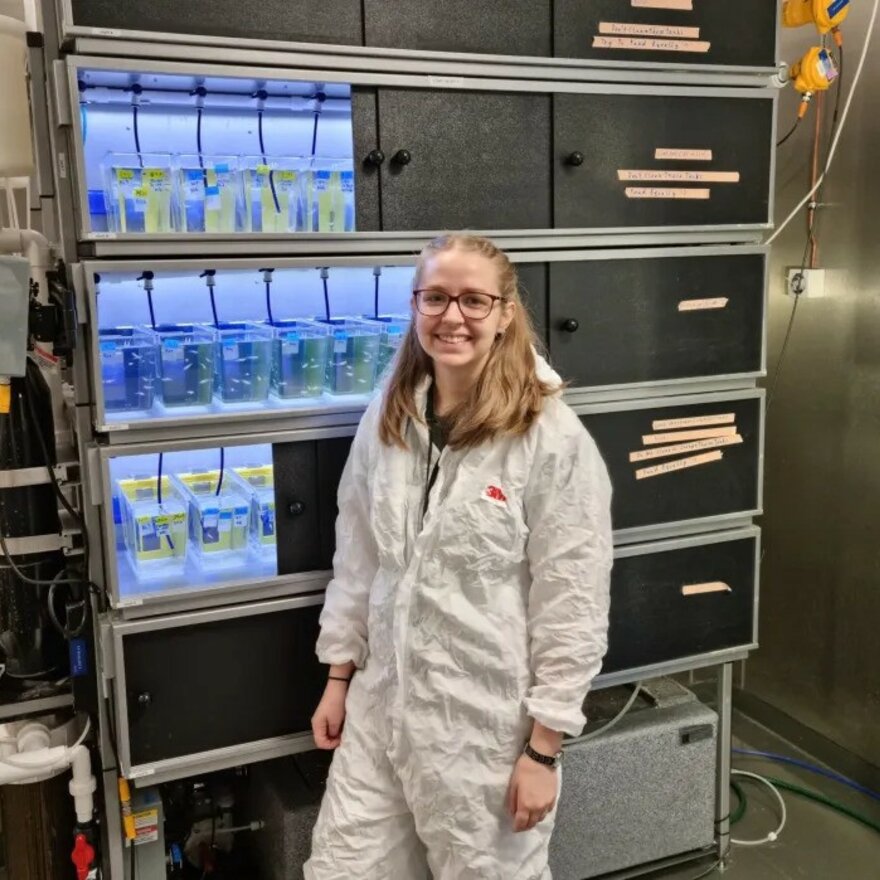
Dr. Romain Fontaine, researcher at NMBU, together with his master students Nils Gunnar Lindbo and Lauren Closs is now starting to investigate the effect of light pollution during night on fish biology. They are using the Japanese medaka as a model organism and use a specific aquarium system where they can control the duration of the light during the day and add some light during night without affecting the rest of the fish in the facility. They are investigating different aspects of fish biology and physiology, including growth, reproduction, stress, behavior. The aim of the project is to better understand how light pollution in urban areas affect the fish.